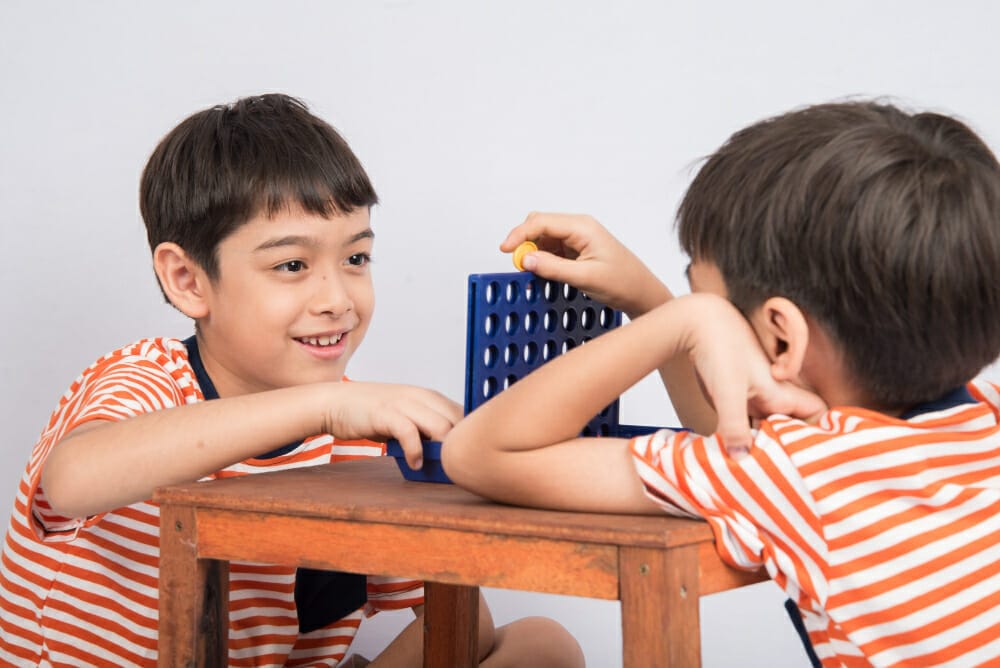Growing up my parents were very creative in disguising ‘work’ or ‘healthy habits’ into things my sister and I enjoyed. For example, cleaning up was always a game of who could pick up the most toys first. Bath time was accompanied by colorful bath paints and bubbles, and reading books was paired with games of iSpy and storytelling not defined by the words on each page. Throughout the last two years, first, as a student clinician followed by working full-time in the field as a speech-language pathologist, I am challenged every day to disguise ‘work’ to engage and motivate my clients so that they can carryover learned strategies and progress made within the clinic in their home.
Early language is such a broad concept that it is easy to work into any play or daily routine that is happening within the home. Using techniques like language modeling and recasting are great ways to work on language expansion with young children. For example, when engaged in symbolic play with a dollhouse or play kitchen, if your child labels actions or objects in the area you can ‘recast’ or rephrase their simple phrase with an adult version (i.e. child says ‘go doll’, parent recast ‘yes the doll is going up the stairs). Ultimately, your goal is to validate their use of language and provide them with the adult or more mature version of their phrase. Language modeling and bombardment can be used during daily routines when labeling objects you encounter (i.e. bowl, spoon, toothbrush, shirt, pants), or actions you are completing (i.e. brush, eat, drink, all done, clean). Modeling language across play and daily tasks can aid in the generalization of language within multiple environments. Modeling doesn’t always require a response or imitation either. Just the consistent exposure to the language being paired with a preferred task, like pretend play, is so beneficial for our early language learners.
Board games are another awesome tool to use to disguise ‘work’ at home and can be entertaining for school-aged kids, teens, and the adults they are playing with. Using board games can target a vast number of areas including early language concepts (i.e. identifying and labeling colors, shapes, letters, counting), receptive language (i.e. following directions, identifying vocabulary/actions), expressive language (i.e. expanding utterances, requesting, labeling), social/pragmatic communication (i.e. turn-taking, working with a group, perspective-taking), executive functioning skills (i.e. future planning, organization, strategizing, emotional regulation). Below are some of my favorite board games I use weekly with each age group and examples of what language areas can be targeted.
For preschool-aged children:
- Pop the Pig
- Pop the Pirate
- Honeybee Tree
- Sneaky Squirrel
- Candyland
When using board games with preschool-aged children I tend to be very loose with the rules of the game and focus more on the hidden rules and ‘work’ such as the importance of turn-taking, how to follow the pattern of a game, labeling the objects, and actions being used, counting, labeling/identifying colors, and keeping their brain and body in the group. Since these little ones are still learning what is expected when playing a board game, working on these social concepts is the focus rather than the actual object of the game.
For elementary-aged children:
- Connect Four
- Guess Who
- Trouble
- Mouse Trap
Once children are more likely to be invested in the outcomes of the games, I prefer to use longer and more strategic board games to target their higher-level thinking skills (executive functioning) while also targeting the goals and objectives for that child. These games are where you can target emotional response to winning or losing, control of impulsivity when taking each turn, or incorporating any type of drill work, such as those in articulation therapy, in between turns.
For middle schoolers and teens:
- Blokus
- Payday
- Battleships
- Life
- Ticket to Ride
For middle school kids and young adults, games that will involve more real-life/everyday strategies are great to generalize skills. For example, Payday or Life can both be utilized to learn about paying bills, managing money, reading/following a calendar, and understanding the beginning of having a budget.
If your child or teen is currently working on occupational therapy (OT) goals as well, our wonderful OT Alyssa Pearce wrote a blog about Bringing Back Family Game Night, and how you can work on OT goals with games at home.
Disguising ‘work’ using pretend play and board games are just two of many ways to make learning fun at home. Personally, I love using books as well. So much so that I previously wrote a blog about how books can be used to target so many different speech and language areas.
As a parent, you know your child best and what they like or don’t like, which gives you the upper hand in finding what you can use to disguise their ‘work’. Get a little messy. Follow their lead. And most importantly, don’t forget to have fun!
Suggested Reading:
Pediatric Speech Therapy Tips to Help Child’s Language Development
One of the Most Versatile Tools in an SLP’s Toolbox: Books
One of the Greatest Things We Can Do With Children Is to Build Imaginative Skills

